















































Embarking on the open water is an exhilarating experience, flled with the promise of adventure and relaxation. Whether you’re a seasoned sailor or a weekend cruiser, protecting your vessel with proper insurance is not just a choice—it’s a necessity. Explore the reasons why every boat owner should prioritize boat insurance for a worry-free voyage.
The open water can be unpredictable, with unexpected storms, collisions, or other potential accidents. Boat insurance can give you fnancial protection if there is damage to your vessel, providing coverage for repairs or replacement.
Accidents on the water can result in damage to other boats, docks, or even injuries to passengers. Boat insurance offers liability coverage, which can pay for damages or injuries you’re liable for while boating, up to specifed limits, and lawsuit costs if you’re sued. This includes damage you cause to another watercraft or if someone on or near your boat is injured and you’re found to be legally responsible.
Unfortunately, boat theft and vandalism are realities that boat owners face. Boat insurance has comprehensive and collision coverage that can protect you against events outside of your control, including theft and vandalism.
Accidents on the water may lead to injuries for you or your passengers. Boat insurance offers a range of optional medical payments coverage limits, helping to cover medical expenses if you are in an accident or someone is hurt on your boat, regardless of fault.
If you fnanced the purchase of your boat, most lenders require insurance coverage to protect their investment. Having boat insurance not only fulflls these requirements but also gives you peace of mind knowing that your fnancial interests are safeguarded.


Some water municipalities and marinas may require proof of insurance for docking or accessing certain areas. Boat insurance allows you the fexibility to explore different destinations without worrying about entry restrictions.
Emergency towing and assistance
Progressive boat insurance can include optional Sign & Glide® On-Water Towing coverage. If your boat is disabled or breaks down on the water, Sign & Glide® pays for on-water towing, jump starts, soft un-groundings, and fuel delivery.
Wreckage removal
If your boat sinks, Progressive boat insurance will cover the cost of removing your boat from the water (if removal is legally required).
Investing in boat insurance is not just about protecting a valuable asset; it’s about safeguarding the memories, experiences, and joy that come with your on-water adventures. Don’t let unforeseen circumstances disrupt your journey—navigate with confdence, knowing that Progressive boat insurance has you covered. Ensure a smooth and worry-free voyage, because when it comes to your boat, peace of mind is the ultimate luxury.
Scan to get a quote in as little as 4 minutes
learn more.





















By Ben Martin, Editor in Chief
The non-pro!t Protect Our Waters reports that, “Fish stocking has been a vital tool for maintaining healthy !sh populations in America’s lakes, rivers, and reservoirs. However, in recent years, most of our waterways have su ered from declining !sh stocks due to habitat destruction, over!shing, pollution, and climate change. If we’re going to combat these challenges, we’re going to need to ramp up our !sh stocking e orts to ensure the sustainability of recreational !shing, and food security.”
Fishing is one of America’s most popular outdoor activities, with millions of anglers heading to the water each year. e recreational !shing industry contributes over $125 billion to the economy annually and supports nearly a million jobs. Unfortunately, declining !sh populations threaten our industry, leading to fewer opportunities for anglers and reduced economic bene!ts for communities that rely on !shing tourism.

but also sustains the businesses like as bait shops, tackle manufacturers, and guide services that depend on a thriving !shery. Additionally, if we’re going to
can lead to an imbalance in the food chain. Stocking e orts can help restore native species in waters where they have declined, preventing the dominance of invasive species that may outcompete them.
While recreational !shing is the primary focus of most stocking programs, increased stocking can also support food security. Stocked !sh provide a renewable source of protein for both commercial !sheries and subsistence anglers.
Enhanced !sh stocking e orts can help mitigate the negative impacts that we’re seeing by introducing hybrid climate-resilient strains of !sh, e technology is there, we just have to use it. Without proactive stocking and conservation e of our favorite species of dramatic declines in the coming decades.

By increasing !sh stocking e orts, states could easily replenish popular game !sh species like red!sh, $ounder bass, trout, walleye, and crappie, ensuring that anglers have plenty of !sh to catch. is not only keeps !shing enthusiasts engaged
encourage a younger generation of anglers to be passionate about this wonderful pastime, they’ve gotta be able to catch !sh.
Many ecosystems are under constant pressure from habitat degradation, invasive species, and pollution. In some cases, native !sh populations struggle to maintain healthy numbers, which

America’s !sh stocking programs could and should play a critical role in maintaining healthy !sh populations, supporting the economy, preserving ecosystems, and enhancing food security. With increasing environmental and economic pressures threatening it’s time for a signi!cant investment in stocking e orts. By expanding hatcheries, improving stocking strategies, and integrating habitat conservation e orts, America can ensure that its waters remain abundant with !sh for generations to come.
Protect Our Waters is an angler-sponsored, nonpro!t organization with it’s primary focus on the sustainability and enhancement of recreational !shing. Learn more at ProtectOurWaters.com.


















There are many reasons why the beautiful, deep-water queen snapper has made its way to the top of many anglers’ bucket lists. Not only is this !sh unique and stunning in appearance, but the quality of !llets it produces tops the scale of other snappers.
Most !sh that are harvested from the deeper, cooler waters, as with queen snapper, tend to yield higher quality table-fare. With the thick white meat on these !sh, that can grow over twenty pounds, targeting this species is a foodie’s delight.
Queen snapper can be found from 400 to 1,600 feet of water, spawning year round, with schools constantly on the move. Although they can be targeted over ledges and deep-sea coral beds within these depths, it’s not common to catch one as bycatch while not speci!cally intending to target them. As with most !sh with a penchant for these depths, research is scarce, with !shermen providing the majority of information on their observed behavior. at being said, targeting this species will be more productive with an experienced guide, rather than going it alone and winging it.
If you are a part of the DIY deep-dropping explorers club, and looking to add queen snapper to your hunt, you’re probably going to want to make a few di erent rigs for them.
An electric reel setup is recommended for this type of !shing. Not only due to the depths you are trying to reach, but you may only get short
By Capt. Quinlyn Haddon
dri%s over where you need to be before its time to reset.
e standard drop LEDs and lights should be used the same as with other deep-drop methods. Utilizing a heavy mono!lament leader line of approximately 300 pounds, a x your !ve drop lines at varying distances from each other. You may !nd you get bites higher up in the water column on certain days, making an extremely long leader more productive in !nding the !sh, especially on a !rst dri%. e drop lines should be decorated with your choice of glowing fandangles, whether it be glow wraps, rubber squids or the simple glow beads. Circle hooks ranging from 7/0 to 10/0 are e ective, and if you choose to put a variety of sizes on a single rig, the larger hooks should be at the bottom of the line.

this type of !shing is new to you, pepper in a few chunks of skin-on bonita in your presentation.
If you happen upon your queen snapper territory and !nd yourself in conditions without much current, you can also attempt to catch them with a heavy slow pitch jig. As long as you have light braid and a heavy jig to get to the bottom, and the energy and tenacity to retrieve it again, this is a productive method in extremely light current.
Once you start catching !sh, you may !nd they are consistently eating the bottom hook or the top hook, you can then play around with switching your rig to a longer or shorter leader.
e ideal go-to bait for queens is squid, but since this is a so%er bait, its easier to miss the bite. If
Queen snapper can be found deep in the gulf, and in the Atlantic from North Carolina to Brazil. While they have hot spots in the Bahamas and deep within the Gulf, e Atlantic waters of e Florida Keys o ers the best opportunity to target these within the United States and with the most minimal travel time. With mahi season around the corner in the Florida Keys, this is a great time to start heading o shore for queen snapper, as it provides a chance to target mahi to and from the deep-drop spots. Give me a call to get out there!
Capt. Quinlyn Haddon guides with Sweet E’Nuf Charters out of Marathon, e Florida Keys. (504) 920-6342. www.captainquinlyn.com; IG: @captainquinlyn








For anyone looking to build the best rod you’ll ever !sh, All-In-One Rod Building Kits from Mud Hole Custom Tackle are the ideal starting point. All-In-One kits take all the guesswork out of building a !shing rod, making it easy and enjoyable. Whether casting, spinning, y, or even ice, Mud Hole has everything you need for the perfect performance !shing rod and to start a lifetime of custom building.
Mud Hole’s All-In-One Rod Building Kits make it simple. Each kit includes everything you need—rod blank, guides, reel seat, grips, thread, and even the tools and supplies for assembly. With everything already preselected and packaged together, beginners don’t have to worry about picking out matching components and determining which supplies and tools are needed—all the work has been done by their professional builders.
Plus, Mud Hole provides all of the instruction required to build your !rst !shing rod. Kits include an easy-to-follow instruction book, and Mud Hole is the world’s largest source of free online rod building education material and content. ere’s nothing like catching a !sh on a rod you built. And All-In-One Rod Building Kits from Mud Hole Custom Tackle are the perfect way to get started in this time-honored cra$.

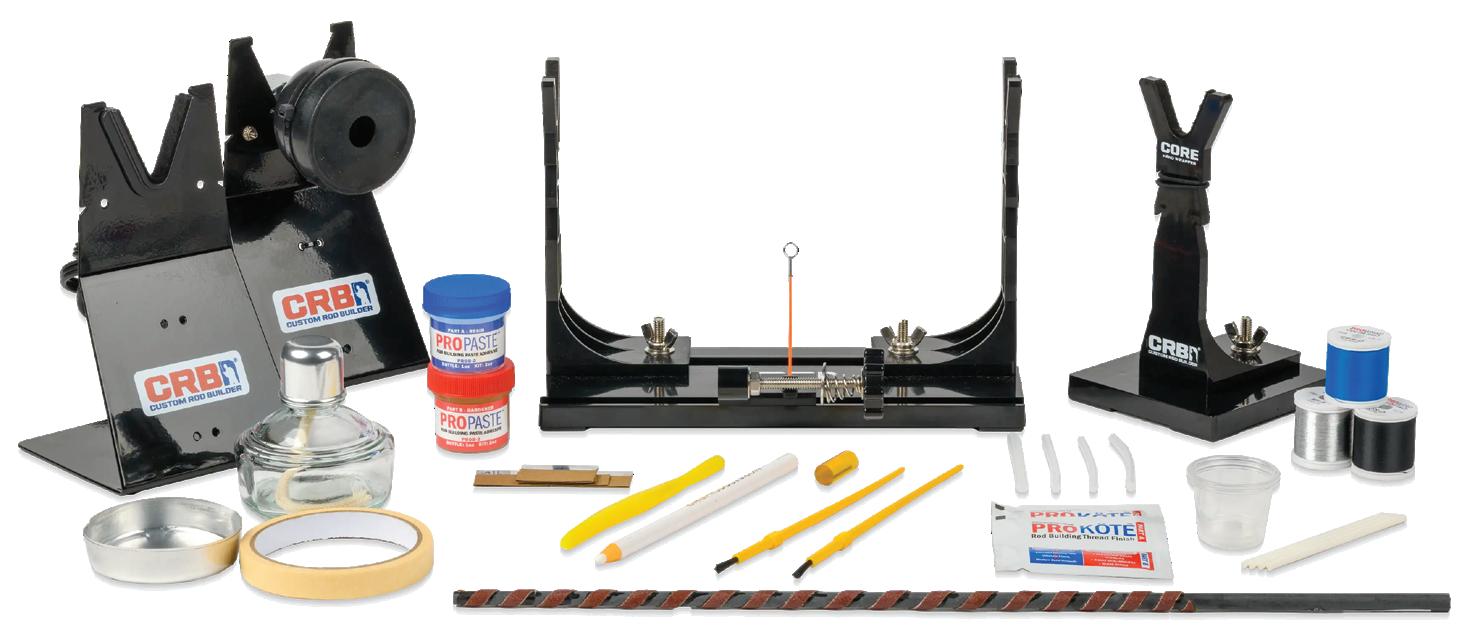


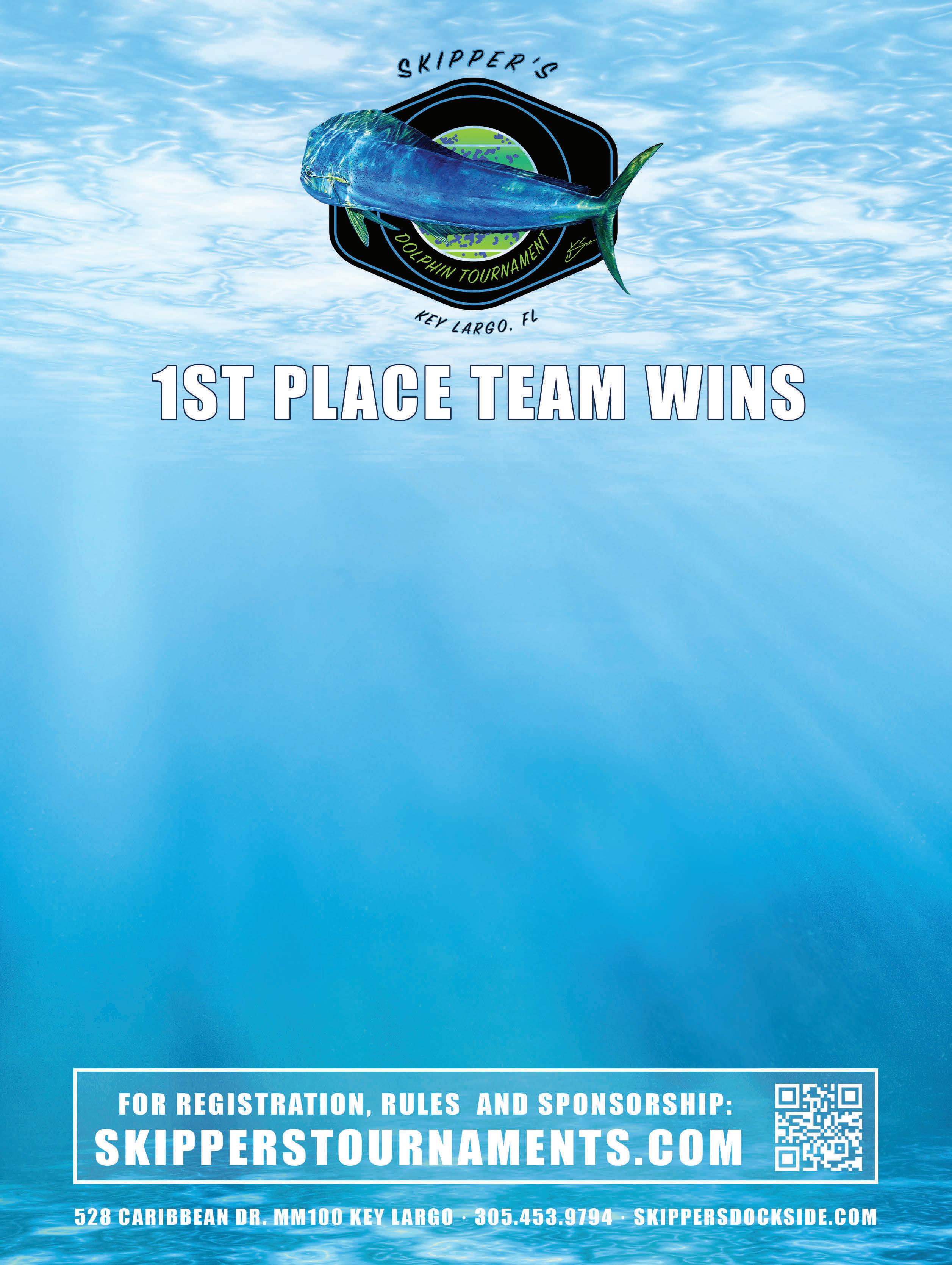
Performance Bulletin Available

Repower






The weather is warming, and the winterchallenged !shermen are pulling their boats out of storage. is undoubtedly will lead to more tra#c on the water. With the added tra#c and high southern winds, this is a perfect time for me to avoid both by swapping the kayak for the boat for a few weeks and going deep into the marsh.
Springs’ rising tides will $ood new water over the once-dry marsh, encouraging more !sh to explore the new terrain in a quest for a good meal. Little do they know, I will be waiting there with my trustworthy rattling paddle tail.
Red!sh will be my primary target since I spent the winter targeting trophy trout. As always, bait will be the key to a successful outing. Since the size of the bait will be small, I like to have two characteristics in my lure. ey are small, roughly 3”, and have a clear sparkling color. is helps produce in most situations because the bait is tiny, maybe smaller than my lure. at is why I like the transparent re$ective colors; they disguise the lure’s size, making it appear smaller.
I like to work irregular shorelines since they have more areas for the bait to hide. I also feel it slows the reds down. When they have a straight shore, they tend to cover more water rather than hang around, allowing you more opportunities. If the water is o -color, I like to add a popping
cork rather than changing color. Known for their e ectiveness when using live shrimp, popping corks also improve the performance of so plastics. Depending on the situation and preference, these can be used on a jig head, weedless weighted hook, or with just a hook. When choosing a popping cork, I like a deep cup, which is hard to !nd on most corks in today’s market, but there are a few. Most manufacturers went away from the actual reason for the name, popping. e original, and a few out there today, still have the deep concave top, which produces the slurping sound and splash mimicking a !sh feeding on the surface. I !nd that sound is what attracts the !sh more than a clack. I’ll dedicate an entire article to cork !shing and the many ways to use them soon. While targeting reds, use a stout hook on your jig head. A hook you can $ex with your !nger is better suited for trout than reds. is is not where you want to skimp on quality. Not only do the hooks need to stand up to the hookset into the thick skin of a red, but they also need to hold up to the torque of removing the hook from the their jaw. I see many hooks get destroyed at this point. ank you for reading my words and don’t forget to take a kid !shing! e time is right.
By Capt. Michael Okruhlik



Spring !shing is one of the most exciting times of the year. As water temperatures rise, !sh become more active, making live bait one of the best ways to trigger bites. A bait pen—a oating or submerged enclosure for keeping bait!sh alive— can be a game-changer for any angler.
One major advantage of a bait pen is ensuring a steady supply of live bait. Instead of relying on bait shops or spending time catching bait before each trip, you can stockpile bait in advance. #is allows you to head straight to your !shing spot with fresh, lively bait ready to go.

A bait pen also saves time and money. Buying live bait regularly can be expensive, especially during peak !shing season when demand is high. Catching fresh bait every time you !sh also takes up valuable time. By storing bait in a pen, you reduce costs and eliminate the hassle of searching for bait before every outing.
Healthy bait is crucial for successful !shing, and a bait pen helps keep bait!sh strong and active. With proper water ow and oxygen levels, bait stays in peak condition for days or even weeks. #is means your bait will swim naturally and attract more strikes compared to weak or dying bait!sh.
Another key bene!t is exibility. Spring weather can be unpredictable, with sudden changes in wind and tide conditions. If a !shing trip gets postponed, a bait pen allows you to keep your bait alive until conditions improve. Instead of scrambling for fresh bait when the opportunity arises,
you’ll be ready to go at a moment’s notice.
Using a bait pen is also more sustainable. Instead of constantly netting fresh bait and impacting local !sh populations, you can responsibly store what you need and reduce unnecessary waste. #is helps preserve bait!sh stocks while still giving you an e$ective !shing strategy.
For tournament anglers and !shing guides, a bait pen is an essential tool. Having premium live bait ready before a trip provides a competitive edge and enhances client experiences. Instead of spending time chasing bait, anglers can focus on putting more !sh in the boat.
A bait pen is a simple but invaluable tool for any serious angler. It ensures you always have quality live bait on hand, saves time and money, and provides exibility for unpredictable !shing conditions. Whether you !sh recreationally or professionally, investing in a bait pen will make your trips more e cient and successful.









ShoreStation hydraulic boat lifts are a reliable choice for coastal residents and boating enthusiasts alike. Their strong construction, made with corrosion-resistant materials, allows them to withstand harsh environmental conditions, including sun, storms, and saltwater damage. ShoreStation provides a steadfast solution for protecting waterfront investments, o ering peace of mind to owners in the Sunshine State.








Equipped with exceptional weather resistant fabric and breathable SunTex 80 woven mesh ends for maximum protection and durability,

Made from the highest quality materials, our innovative hydraulic boat lift is one of the fastest and safest lifts on the market today. When you have a hydraulic lift, there’s no need to worry about wind and waves getting in your way. This lift will give you con dence to safely land and secure your boat in less-than-ideal conditions.
Never miss another moment on the water. Power your lift with clean, free solar power. Our speedy 20 watt charger features solar regulator drainage protection, saving your battery from permanent damage caused by overcharging.




For more information on future contests, visit
We’ve all heard it, and most of us have said it at one time or another, but on March 3rd, 2025 George Poemer of Robbinsville, NC, received his Coastal Angler Magazine contest prize: a brand new Suzuki Marine DF2.5 Portable Outboard Motor! Now, at least one of us out there can never say, “ I never win anything,” again. Congratulations to George for being chosen the winner, and a special shout out to our friends at Suzuki for making this really cool contest possible. www.coastalanglermag.com












By Mark Ambert
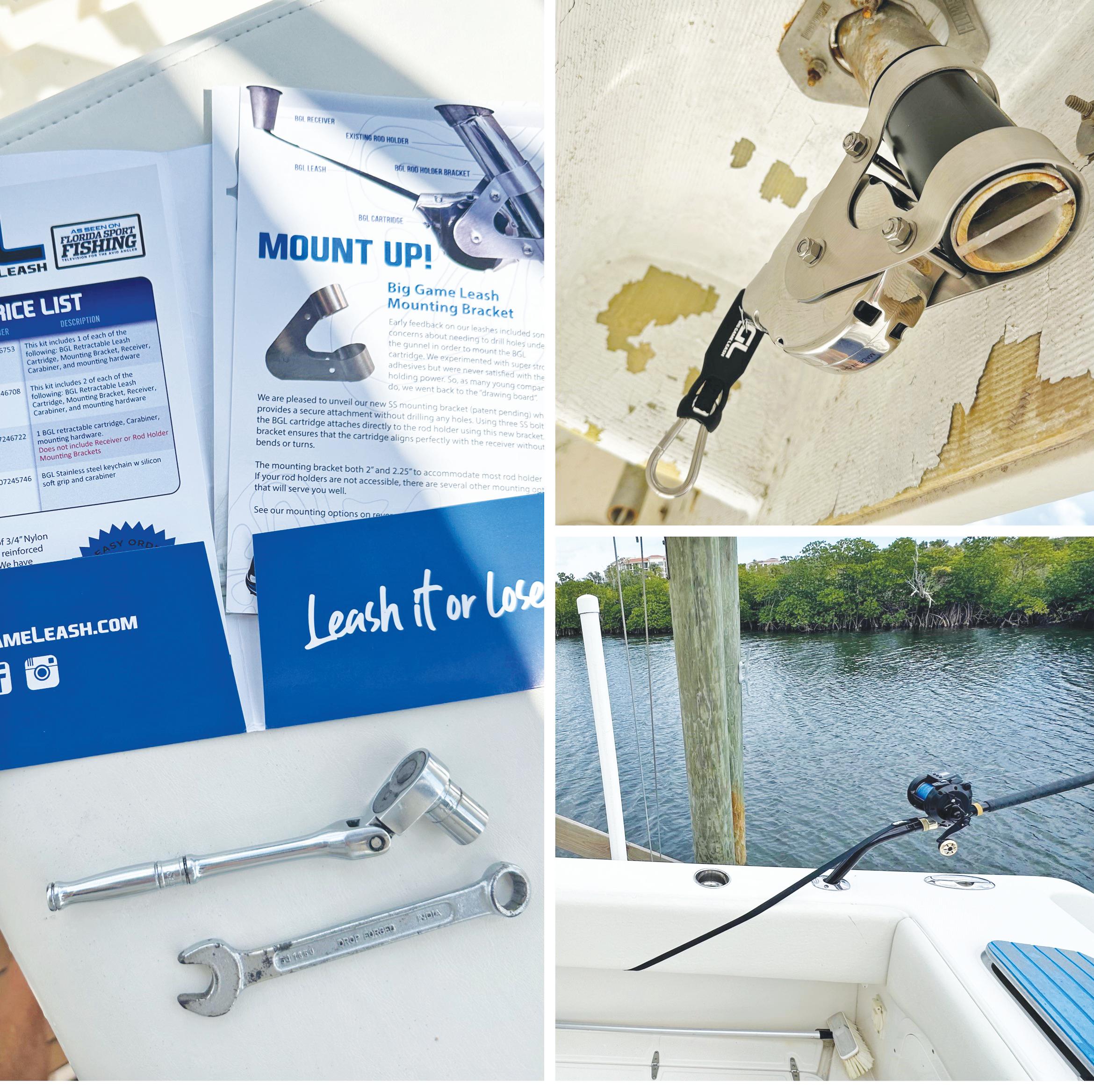
Occasionally, you find that one thing that requires very little thought to purchase. This recently occurred while spending a Sunday at the Miami International Boat Show. I was looking for something new and unique but had nothing particular in mind when I ran across the BGL booth and its CEO / inventor Ted Gorder. Here I found the Big Game Leash Mounting Bracket and it was one of those items I wished I had thought up myself. In speaking with Ted, I took an instant liking to his no-nonsense approach and practical solution in preventing a potentially epic calamity –losing expensive gear at the gunnel.
Oftentimes it takes expensive high-end gear to catch fish, the kind of stuff you don’t want to lose overboard. As an example, I use electric reels for deep dropping as well as high speed trolling. It’s heavy, awkward, and not the kind of stuff I want going overboard. Combine that with sometimes inexperienced anglers on board and you get the picture. A little quality assurance goes a long way.
Enter the big game rod leash (BGL). Not only does it prevent this scenario, but it’s also easy to install and stays out of the way until needed.
With their new stainless steel mounting bracket, it provides a secure attachment without drilling any holes. Using three SS bolts, the BGL cartridge attaches directly to your existing rod holder without any modifications to your boat.
The mounting kit includes both 2” and 2.25” adapter sleeves to accommodate most rod holder sizes.
Installation couldn’t be any easier - with just two tools and twenty minutes time, I was able to install one on each side of my boat. Here’s just a few of the options available for mounting.
- For owners who do not wish to use the BGL receiver which mounts directly to the gunnel via a cut-out.
Mount – Through bolted for those who like to run rods from the rocket launcher.
Gunnels - We have found that the transom corners are usually open and accessible. Our 9’ leash can easily reach rods from the transom corners.
Stacking - Two BGLs can fit on a single 4” through bolt. This allows two rods to be leashed from a single mounting bolt.
Hidden Bolts - Hiding the through bolt behind the coaming pad.
Once installed a BGL unit with its 9’ leash will provide safety and security for rods used in multiple rod holders along the gunnel, all while staying out of the way. All this at a reasonable price point for such a high quality and effective solution. So, get on their website and check out this innovative and “must have” solution. You’ll never worry about losing expensive gear on the leash!
Mark Ambert, IG @marksgonefishing_™ marksgonefishing25@gmail.com_ BGL Big Game Leash www.BigGameLeash.com

Please be sure to check out my YouTube Channel “Darcizzle Offshore” for fishing videos every week! www.youtube.com/DarcizzleOffshore
Daylight savings time is in full effect this month so be sure to take advantage of the extra sunlight we have in the late afternoons! We should have delightful springtime weather; winds will be blowing out of the East/South East the majority of the time. Offshore, when we have an easterly wind blowing, the pelagics will be pushed closer to shore looking for bait stacking up along rips/edges. Trolling artificial and dead bait between 175-300’ will produce dolphin, bonito, blackfin tuna and the occasional wahoo. Bonitos and blackfins show up again in our waters this month. When targeting blackfins, you can troll small feathers and daisy chains. TIP: Be sure to set your spread as far away from your boat as possible. Let the line out until you think it’s far enough and then let the line out some more! Blackfins are spooked easily by the roar of your engine, so fish wisely. Blackfins also feed in lowlight conditions and love small live bait. Try chumming with cut sardines to bring these fish to your boat.
A lot of cobia should be caught this month as well, primarily in 90-150’ of water. Cobia are hanging around the wrecks and following the sharks. Throw out a chum bag to bring hungry fish to your boat. Drift back dead sardines on a triple hook rig or a cobia jig. If you do get tight on a fish using this method, reel as fast as possible to keep your catch away from the sharks. When fishing the deep water wrecks, jigging will produce big amberjacks, pompano, bonito, and mutton snapper. The bottom fish also love to eat live bait such as pilchards, threadfins, and goggle eyes. Inshore, this is the month to catch yourself a big snook! This time of year, snook will start to invade the bridges and inlets and will eat just about anything thrown at them. At night, fish the bridges with Flair Hawk jigs, large swimbaits or topwater lures. The live bait of choice this month will be mullet and croaker if you can find them. Fish the bridges, inlets, and seawalls at first light or at night during the beginning of the outgoing tide or the last of the incoming tide. Tarpon will be showing up around the Palm Beach Inlet and mangrove areas feeding on crabs and bait fish. The best bait for targeting the silver king will be live mullet.
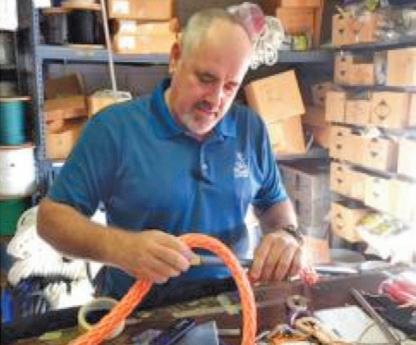

















DOCK























Chunky Everglades largemouths have been extra cooperative.


Here is your South Palm Beach County inshore and freshwater forecast for April. For me, April is very similar to March; lots of north and south wind, some very gusty days, and a few pretty days also. As it gets warmer, we start to shift in techniques and tactics. We start using a lot more fish as bait like mullet, ladyfish, and threadfins as opposed to the crustaceans (shrimp and crabs) used throughout the winter. I will also continue to keep a goofy jig tied on along with a popper because we have random days where giant lady fish, bluefish, and pompano will show up. This is also the time of year when we start to get more blackfin tuna action at sunrise and sunset. They are not super difficult to catch, you just have to be out there at the right time. Ripping up a deep jig through the water column anywhere from 100 to 300 feet at dawn or dusk will probably reward you with sushi for a couple of days. If you’re not into jigging, you can pull a small feather or lipped diving plug and also put some meat in the box. Snook and tarpon fishing will be drastically improving,






5
8
9 Wed 8:19 2.4 8:42 2.5 2:48 0.2 3:11 0.1 7:01 7:42
Thu 8:59 2.4 9:24 2.5 3:33 0.1 3:51 0.0 7:00 7:42
Fri 9:35 2.5 10:01 2.6 4:13 0.1 4:28

and you will be finding fish in their normal spots as they come out of the deeper water to warm up.
The freshwater fishing is really going to be getting good as the peacock bass have completed their first spawn in March and are probably starting to focus more on eating. Clown knifefish are nocturnal fish but April can be a great month for them. Keep your eye on the lunar chart and fish very close to the full moon; you will have some days where they are relentless. Fishing for clown knifefish at night can also be a blast. The northern Everglades and Alligator Alley is a tough place to beat this time of the year. There will be plenty of days to try flyfishing and ultralight tackle where you can catch a fish on every cast and lot of times, they will all be different species. Oscars, cichlids, peacocks, gar, bass, and panfish will all be stuck in the canals due to low water levels. Jerk baits and marabou jigs should keep you busy all day long.






















26
27
29
30










with Chris Thalmann
Hey there everyone, hope you’re enjoying the first few weeks of Spring! It’s been a good season here at Aqua Adventure Tours, but lots of re-scheduling due to weather, making an already busy season a little hectic. But we’re lucky to be able to change-up routes and schedules as needed to make things work!
For example, last month we had a family onboard who really wanted to see sea turtles and dolphins on the ocean as part of their charter. They’re into wildlife and nature and this was their third outing with us. Unfortunately, we had a cold front blow through that morning, chopping up the ocean and making it tough to find anything out there.

We had moved up our departure to leave the dock early, just after sunrise. And as it happened, a bit of maritime history was passing through our area around the same time.
The cold front caused the long-retired SS United States to divert course and swing much closer to the coastline than was planned, just a few miles offshore from Palm Beach. History fans may recall the SS United States, built in the early 1950s, holds the record for the fastest transatlantic crossings ever by a passenger liner - still!


But that was long ago. The sleek, sharp hulled ship that set those records has been rusting away in shipyards for more than 50 years. Longer than the Titanic, and in many ways a relic of her time, she was towed on her final sea voyage by a single tug, from Philly to the Gulf Coast.
We decided to go see her up-close. As we left the shelter of our coast and began closing the miles, it became obvious that time has not been kind to this ship. Her classic lines remain, but rust grows unchecked, hiding the rich colors that she once sported. For many years, the non-profit foundation that owned the ship tried to raise money to restore and preserve it through tours, outreach campaigns, even angel investors. But last year it was finally apparent that there would be no restoration, no return to life for this old gal.

And yet - the ship that transited the Atlantic as America’s Flagship is now in the hands of a shipyard in Mobile, Alabama. Instead of being broken down for salvage, the SS United States is destined to become the world’s largest artificial reef, just offshore of Destin/Fort Walton Beach.
Once more, she’ll be released to the oceans to set records. Not as originally intended of course. But she’ll live on beyond memories as reef habitat, supporting an abundance of life below water, as she once did above water.
Artificial reefs are found worldwide and are often a critical part of healthy marine ecosystems. If you’d like to learn more about our local artificial reefs, visit https://discover.pbc.gov/erm/ Pages/Reefs.aspx.
Hope to see you on the water!


Fwith research and through training the next generation of scientists, problem solvers and policymakers,” said Valery E. Forbes, Ph.D., dean of the Schmidt College of Science. “We are in a prime location to study the environment and its intersection with urban areas – with the Atlantic Ocean, the Indian River Lagoon, the Everglades and numerous freshwater ecosystems converging in the largest metropolitan area in the state.”
The school also serves as a connector for numerous pre-existing educational programs at the undergraduate and graduate levels and as a platform for engaging external partners from the private sector, government, and non-governmental organizations.
lorida Atlantic University’s (FAU) six campuses are situated in a region at the nexus of rapid urbanization and accelerated environmental risk. Rising temperatures, coastal erosion, more frequent and intense storms and floods, habitat destruction, environmental contamination, and harmful algal blooms are concerns of everyday life that require quick understanding and solutions.

Recognizing the critical intensification of these issues in South Florida and beyond, FAU launched its new School of Environmental, Coastal, and Ocean Sustainability (ECOS). A partnership between the Charles E. Schmidt College of Science and FAU Harbor Branch Oceanographic Institute, the school is comprised of a broad array of existing disciplines and units to amplify FAU’s research, teaching, and community engagement, while creating a comprehensive environmental hub at the university.
“Our expert faculty and scientists in the Schmidt College of Science and FAU Harbor Branch are forging a path that leads to a resilient future, both
“We are developing partnerships with various nongovernmental environment organizations to offer internships for our students,” states John Baldwin, Ph.D., interim director for ECOS. “The school’s faculty affiliates collaborate with various public and private sector partners, and as ECOS continues to grow, we plan to bring these collaborations formally under the ECOS umbrella.”
One of the biggest challenges facing South Florida is meeting the needs of the area’s unique ecosystems, such as the Everglades, with the needs of a rapidly growing human population. “Because ECOS affiliates cover such a wide range of disciplines from ecology to computational modeling to urban and regional planning, the school is ideally suited to solve complex environmental challenges,” said Baldwin. “Such challenges are not unique to South Florida, and our vision is to be a model for other parts of the globe.”
By Keith Lozott
Typically, I don’t believe in superstitions, but a er a recent shing trip with my buddy Neil, I may be a believer!!! e morning started slow; I caught a small snapper and small snook. Neil was in skunk mode, so we decided to try a spoil island where I’ve caught some trout, snook, and a gag grouper on a prior trip. To our dismay it was dead as well. Just as we were about to exit stage le , Neil was working a topwater lure back to the boat when what appeared to be a large bull shark came up from the bottom and tried to hammer the lure. Unbelievably it totally missed the lure and disappeared. It was impressive to witness such a big specimen of a sh take a swipe at the lure.
A er the “Shark Week” experience, we continued to struggle so I decided to implement Plan C and move from the east side of the Indian River to the west side. I’ve had some nice shing on the west side with trout, reds, and snook. We made our way across the river stopping at another spoil island only to be greeted with a jack attack. I landed several jacks and Neil hooked one that got o . His skunk was still intact but with jacks around I gured that would change. Unfortunately, that wasn’t the case.
Typically, I don’t believe in superstitions, but a er a recent shing trip with my buddy Neil, I may be a believer!!! e morning started slow; I caught a small snapper and small snook. Neil was in skunk mode, so we decided to try a spoil island where I’ve caught some trout, snook, and a gag grouper on a prior trip. To our dismay it was dead as well. Just as we were about to exit stage le , Neil was working a topwater lure back to the boat when what appeared to be a large bull shark came up from the bottom and tried to hammer the lure. Unbelievably it totally missed the lure and disappeared. It was impressive to witness such
A er the “Shark Week” experience, we continued to struggle so I decided to implement Plan C and move from the east side of the Indian River to the west side. I’ve had some nice shing on the west side with trout, reds, and snook. We made our way across the river stopping at another spoil island only to be greeted with a jack attack. I landed several jacks and Neil hooked one that got o . His skunk was still intact but with jacks around I gured
We used the trolling motor to quietly make our way towards the mangroves hoping to get a glimpse of a red, snook, trout, ounder, or any inshore species willing to bite. As we approached the shore, we noticed another bull shark working the shore and of course I had to make a cast or two at him, but he had no interest in my o ering. We kept working the shore and nally it happened for Neil!!! He made a long cast and almost as soon as the lure hit the water, he was on with a nice sh, but we couldn’t see what it was. He started gaining ground getting it closer; enjoying the ght and then it happened! e sh came unbuttoned and at this point I was like dude, what did you do in a previous life to deserve this??? We made our way toward a dock that I know holds snook. I made a long cast and right then I was hooked up with a huge sh. It was a big snook; I got her to the boat, revived her, and released her to ght another day. Success! I said, “let’s go to lunch and call it a day”. I asked Neil if he was hungry and then he disclosed to me that he ate a banana for breakfast! Neil knows not to bring bananas on the boat (it’s bad luck), but it didn’t occur to him that the curse would remain in e ect with it digesting in his stomach. Myth con rmed or was it bad luck? He should’ve brought his lucky rabbit foot!!! Keith Lozott


We used the trolling motor to quietly make our way towards the mangroves hoping to get a glimpse of a red, snook, trout, ounder, or any inshore species willing to bite. As we approached the shore, we noticed another bull shark working the shore and of course I had to make a cast or two at him, but he had no interest in my o ering. We kept working the shore and nally it happened for Neil!!! He made a long cast and almost as soon as the lure hit the water, he was on with a nice sh, but we couldn’t see what it was. He started gaining ground getting it closer; enjoying the ght and then it happened! e sh came unbuttoned and at this point I was like dude, what did you do in a previous life to deserve this??? We made our way toward a dock that I know holds snook. I made a long cast and right then I was hooked up with a huge sh. It was a big snook; I got her to the boat, revived her, and released her to ght another day. Success! I said, “let’s go to lunch and call it a day”. I asked Neil if he was hungry and then he disclosed to me that he ate a banana for breakfast! Neil knows not to bring bananas on the boat (it’s bad luck), but it didn’t occur to him that the curse would remain in e ect with it digesting in his stomach. Myth con rmed or was it bad luck? He should’ve brought his lucky rabbit foot!!!
Keith Lozott The Fishing Realtor







TO THE BOAT! Give us a try and see what everybody is raving about! We put the “FUN” back into drift boat fishing! So sit back, relax you’re on Island Time!
VERY

Welcome back to the Coastal Angler Magazine fishing report for the month of April. Get ready for some good fishing! April is the month for action with tuna, wahoo, and dolphin on top of the list. When fishing tuna, live bait is king. You want to set up a drift out deep. Start in 300 feet if the wind is from the east. Then, stager your baits from 250 feet to 50 feet deep. Light leader is a must!
Let’s now talk about the wahoo fishing. Head out at first light and troll planers. We run a two-planer system at reelintensefishing.com, this can be tricky when making your turns, so go wide. Put one rod out far and the other close, this will help with tangles. Also, use fresh bait for sure, where split tail mullet works the best. Tight lines!
Sailfish will still be around our waters. There was record numbers caught this year, so it seems the fishery is healthy. Kite fishing is the way to go if you want to catch one of these majestic creatures. Make sure you leave all the baits in the water when fighting one. They swim in packs and having four on at one time is the way to win tournaments. Be ready!
For the inshore anglers, expect great tarpon, snook, and permit fishing around the inlets. Tarpon are somewhat easy to spot. Look for dark masses in 20 feet of water. Live sardines will do the job, but artificial bait will work too. When trying for permit, live jumbo shrimp does the trick. For the snook fanatics, docks leading out to the inlet will hold some lunkers.

Happy Easter! April is a wild month, it can be hot, rainy, or cool. Fishing is great, no matter what the weather brings. The spring mullet run creates an eating frenzy along beaches and inshore waters.
Fishing along docks, sea walls, and mangrove shorelines are great areas for anglers to target the snook a.k.a. linesiders. Sunrise provides great action

Congratulations to these boys for reeling in an epic African pompano. You just don’t know what you will catch in April.
Shrimp will work great and get you many bites. Now you have all the info to get it done. Remember, “you can’t catch them from the couch”.
and top water Rapala Skitter Walks entice explosive strikes. Midday, switch to a D.O.A. C.A.L. 3-inch Shad in glow/gold rush belly. Seawalls and grass flats are great areas to find snook laid up ambushing bait schools, so be sure to stay quiet and look for bait schools or snook crashing baits as signs of life.

Father and son doubled up on common snook.
Tarpon fanatics! April tarpon action gets the drag screaming. Tarpon can be seen rolling on the surface, where both sides of the tides produce great results. D.O.A. Bait Busters in pearl/black back get the silver kings excited. Live bait for tarpon will get the drag screaming, with free line or slow troll baits along mangrove shorelines and drop-offs for consistent action.
Anglers looking for drag screaming action on light tackle, target jacks along seawalls and grass flats. The jacks school together ambushing schools of live bait in the vicinity. Rapala Skitter Walks and D.O.A. PT-7 weedless top water work great for the jacks. If artificial lures are not your choice, live mullet and greenies will also produce action. Free line baits with the tide or near any structure for best results.

Well, that is the fishing report for April, I hope you all enjoyed. Get out there and get hooked up. Tight Lines!







1

































































Spring is near! April should keep some pompano around and look for tripletail to be in full swing. Pompano as usual, will be along channel edges near your favorite inlets. I like to fish for pompano in the morning and then head to look for tripletail. Using the sun to your advantage, you can see tripletail hanging around crab buoys and channel markers. Both pompano and tripletail can be caught using a D.O.A. Lures 2.75” Shrimp. Switch to the 3” D.O.A. Shrimp if you need the bait to stay in the strike zone a little longer. Snook will also be back on the list of targets as April usually brings a small Spring mullet run along with more white bait. A Yo-Zuri Lures Topknock or a D.O.A. Bait Buster are both great options for artificial lures.
April will really start to push in more bait and along with that comes more species and numbers of pelagic fish. Mahi, tuna, sailfish, wahoo, and
Agood fishing guide always considers the conditions before a trip— temperatures, wind, tides, cold fronts, and upcoming storms all play a role in planning the best experience possible. Sometimes, though, things don’t go as expected.

On this particular trip, I had Susan and Jimmy visiting from Oklahoma, eager to fish the legendary waters of Flamingo in Everglades National Park—one of the best fishing spots in the country. However, a strong cold front had pushed through the night before, and I knew the wind was going to pick up. Cold fronts can make fishing tough, as fish tend to feed heavily before the front and then hunker down once it passes. Still, Susan and Jimmy were coming from freezing 10-degree weather, so to them, a morning temperature of 58 degrees with a high of 70 didn’t seem too bad.
We launched at 7 AM, heading out into 18 mph winds. At 30 mph on the boat, it felt brutal. Thankfully, we only had to go four miles before stopping to thaw out a bit. The wind had pushed a lot of water out of the Florida Bay area we were fishing, which can be both good and bad. On the plus side, lower water levels force fish into the deeper channels, concentrating them in
kingfish will all be in the normal trolling waters of 60-250 feet of water. April will always bring a good push of sargassum grass as well. Look to focus your spread on weed lines and current edges. The grass will hold baitfish and the fish won’t be far behind. Goggle eyes, pilchards, threadfins, blue runners, and mullet will all work for your live bait presentations. Yo-Zuri Crystal Minnows are a great option as well this time of year.
Peacock bass and clown knifefish will be chewing this month. Prop baits will work well for peacocks


along shallow edges. Try 15-pound Yo-Zuri fluorocarbon leader and a 2/0 circle hook casting in and around structure and weed lines to get onto a few clowns on shiners. Look to fish midwater column and below by adding a pinch weight to your leader and get that bait in their face. If targeting snakeheads, look to fish a frog along shallow edges with weeds. Check out Pushin’ Water Kayak Charters on Facebook, Instagram, and TikTok for all the latest adventures my clients and I get into.
specific areas. The downside? The wind stirred up the mud flats, dirtying the remaining water and making many areas unfishable.

Despite the conditions, we gave a few spots a try. We got blown around a bit, but then Jimmy hooked into something solid—a beautiful 27-inch snook on a small swimbait. He didn’t realize just how special that catch was until I told him that some people spend years targeting snook without ever landing one! Fishing for snook with lures like swimbaits is often more effective than using shrimp, as shrimp tend to attract catfish, ladyfish, and other smaller fish before a snook gets to it. Snook are ambush predators that rely on their lateral line to detect vibrations in the water, allowing them to track down a three-inch bait moving five mph in pitch-black conditions— an ability few fish possess.
With the wind still howling and the sun refusing to break through the clouds, we moved to Slagle Creek, about five miles away, looking for some calmer waters. The bite was slow, but Susan managed to land a nice 14-inch trout. As our four-hour trip wrapped up, we made the 25-minute ride back to the ramp, cold but satisfied with the day’s catch.
Looking ahead, I’m excited for the warming waters, calmer winds, and the incredible fishing that spring will bring. If you’re ready to experience one of the best fishing spots on earth, book a trip and mention Coastal Angler Magazine when you do!



• Great Customer Service
• Unlimited Range Time
• Florida Concealed Weapons Classes
• FiReaRmS TRaininG CouRSeS
Beginner to advanced & Private Classes
Provided by Florida Firearms Training
• Fully air Conditioned Range
• maintained at 72 Degrees






































































South Florida Fishing Charters • (954) 440-5200 • sflfishingcharters.com

Spring is in full force and the fishing couldn’t be better! Alligator Alley canals all the way to the Lake Ida Chain have been rapid firing. I will share some tips and tricks with you to ensure you get on the fish this month.
The Everglades is where I do most of my fishing this time of the year because in a single day you can have a chance to catch 10+ species of fish. That’s no exaggeration, either! If you’re a pan-angler, it’s paradise! Mayan cichlids and oscars are aggressive for their size, and they are plentiful. Then you have the natives; largemouth bass, copper-nose bluegill, spotted sunfish, warmouth, and Florida gar to name a few. All those fish, and we can’t forget the King of the Glades: the peacock bass. Deriving from the cichlid family, peacock bass are very aggressive and average 1-3lbs. in the Glades. The Everglades is full of wildlife too, so don’t just go fishing! Make sure you sightsee and enjoy Florida’s natural beauty as well. My top baits for the Everglades fishery are Megabass x80 Jr. Jerkbait, Vision 110 Jr., and the Z-Man Micro Finesse lineup. Consistent weather is also a major key to success in the Everglades. It was a colder than normal winter, and we are excited for a warm spring. The Lake Ida Chain has its ups and downs. This time of the year can be amazing, and while most of the time it is an excellent option to fish, it can and will throw you for a loop sometimes. A couple of easy things to remember about fishing the Lake Ida Chain are that it’s all about water temp; if the water temp is under 74°F, fish deep, in deeper canals, deeper areas, and deep structures. When the temp is over 78°F, they will be in the shallows, under docks, and in areas where you can sight-fish them. The in-between temperatures can be tricky, and you’ll have to put some time in to find them. Lastly, live bait works best on the Lake Ida Chain; however, I enjoy throwing a jerkbait or a wacky worm occasionally. This system constantly changes, so spread out your regular areas and keep casting. Tight lines!







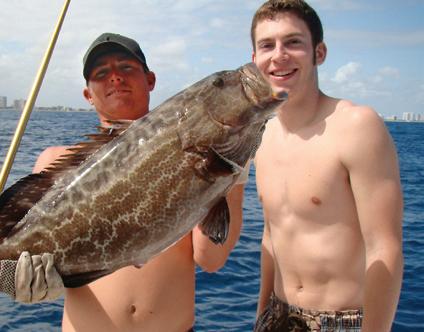






April is a fantastic time to be on the water in Fort Lauderdale, as the fishing conditions really start to heat up. Drift fishing takes center stage this month, with anglers targeting a variety of species thanks to the warming waters that draw in bait fish, which in turn attract the predators we love to catch.


One of the standout features of April fishing is the snapper bite. Mutton snapper, mangrove snapper, yellowtail snapper, and lane snapper all become more active as the waters warm. These snappers are typically found in depths ranging from 30 to 100 feet, and they provide an exciting challenge for anglers. The action is steady, and the fish are healthy and abundant. Whether you’re a seasoned angler or a beginner, the snapper bite this time of year is not to be missed.

While the snapper action is strong, it’s not the only game in town. As the waters continue to warm, the larger predators start making their presence known. April is a prime month for sportfishing, and our charter trips are a heavy hitter during these months. Big game sharks start becoming more active, and there’s always the thrill of targeting massive specimens. Mahi mahi also begin their migration along the coastline, providing excellent opportunities for anglers who are ready for an action-packed fight. Blackfin tuna are another species that shows up in abundance during April, with their speed and power providing an exhilarating challenge for any angler.
For those looking for a real test, big barracuda and amberjacks are also frequent targets this time of year. Both species are strong, fast, and relentless fighters, making them ideal for sportfishing enthusiasts. And, of course, let’s not forget about sailfish. Fort Lauderdale is known for its world-class sailfish fishing, and April offers an excellent window of opportunity for those looking to hook into one of these majestic creatures.
With the abundance of species available to target and the ideal fishing conditions, April is a prime time to get out on the water. Whether you’re into snapper fishing on a relaxing drift or looking to take on the excitement of big game fishing, Fort Lauderdale offers it all.
So, don’t wait, give us a call and book your fishing trip today – April is the perfect time to make some great memories on the water. Let’s go fishing!




The 5th Annual Florida Outdoor Expo is set to return as one of the year’s most anticipated South Florida events from May 2-4, 2025. The South Florida Fair Grounds is proud to welcome back the Largest Sportsman Show in Florida, with a diverse exhibitor line up of all outdoor brands, and lineup of activities, entertainment, and competitions, the event promises to be an exciting experience for all outdoor enthusiasts!
This year’s event will feature a variety of attractions, including live performances, food vendors, dock diving dogs, petting zoo, liquor tastings, and a highly anticipated return of both the archery and BBQ competitions. Attendees can look forward to an immersive experience that highlights the best of South Florida’s culture, exhibitors, and love for the outdoors.
“We are excited to be kicking off year five, we are bringing more to expo than ever before and we are looking forward to showcasing this year’s event,” said Mike Allen, Vice President. “We have been working hard to grow our interactive experiences and vendor list—from families seeking fun activities to the avid hunter or glades man. It’s going to be our best expo yet.”
Attendees will also have the chance to new specialized exhibits, such as the RealTree booth, and engage with their favorite local businesses, such as CHAOS fishing, Epic AirBoat Adventures, and Everglades Fishing Co. All showcasing products, experience, and everyone’s favorite merchandise items. The event will run from Friday, May 2 through Sunday, May 4, with tickets available for purchase now at www.floridaoutdoorexpo.com.
Experiences & Attractions: Petting Zoo, Dock Diving Dogs, Axe Throwing
Food & Beverage: Vendors, BBQ, & Liquor Tastings
Vendors: Discover the latest products in the outdoor space. Competitions & Contests: Archery Competition & BBQ Contest
Tickets are AVAILABLE NOW. For updates and more information, please visit www.floridaoutdoorexpo.com or follow the event’s social media channels on Facebook and Instagram.
Dates: May 2-4, 2025
Location: South Florida Fairgrounds, 9067 Southern Blvd, West Palm Beach, FL
Tickets: Please visit www.floridaoutdoorexpo.com to purchase tickets.



The classroom knowledge and on-the-job

you’ll gain in this two-year associate’s degree program can help you build a solid, successful, and rewarding career. Spend time in the classroom at South Georgia Technical College and back at one of our dealerships learning handson. Our instructors and the personnel from sponsoring dealerships are committed to providing the highest quality training. You’ll choose a focus on John Deere agriculture and turf equipment or a focus on John Deere construction and forestry equipment. Graduate with your AA and you are guaranteed a job with us.
No matter which focus you choose, you’ll cover:
• Diesel engines
• Powertrains
• Brakes
• Electrical and hydraulic systems
• Computer diagnostics
• Proprietary John Deere systems
• Shop procedures and safety
• General education instruction
• Training on specific product lines

You will also work at your sponsoring dealership as part of the curriculum. And get paid for it. This is where all your time in class — learning customer service as well as hydraulics — comes together. At a dealership, you learn from seasoned service technicians and deal with real people, customers who need their equipment fixed right. And fixed right now.
Your time at a dealership is intense. You’ll put all you know about John Deere diesel engines, powertrains, electronics, and diagnostics to work. You’ll learn you really can fix a machine with a laptop and a wrench. And you’ll discover how your skills affect everyone you come into contact with, from customers to coworkers. It’s this real-life experience that puts our graduates in demand. Not only are you learning about working in a dealership, but dealerships are learning about working with you.
This program requires that you have a high school diploma or equivalent. Your chosen school can help you register for applicable college entrance exams.
Successful graduates go to work at John Deere dealerships that provide job placement, excellent starting pay, extensive benefits and great work conditions. You’ll go to work every day using your newly gained skills, knowing the dealer values your talent and passion. Dealerships invest in our technicians because they are the best in the industry.
Any interested families and students can learn more here:
https://www.evergladesfarmequipment.com/careers/jd-tech-program/?srsltid=AfmBOoqu3O0Bq2A9Dmo5bUaLk2tL_bDdqVIqyH6Xm5qDX-xd0do1WIH
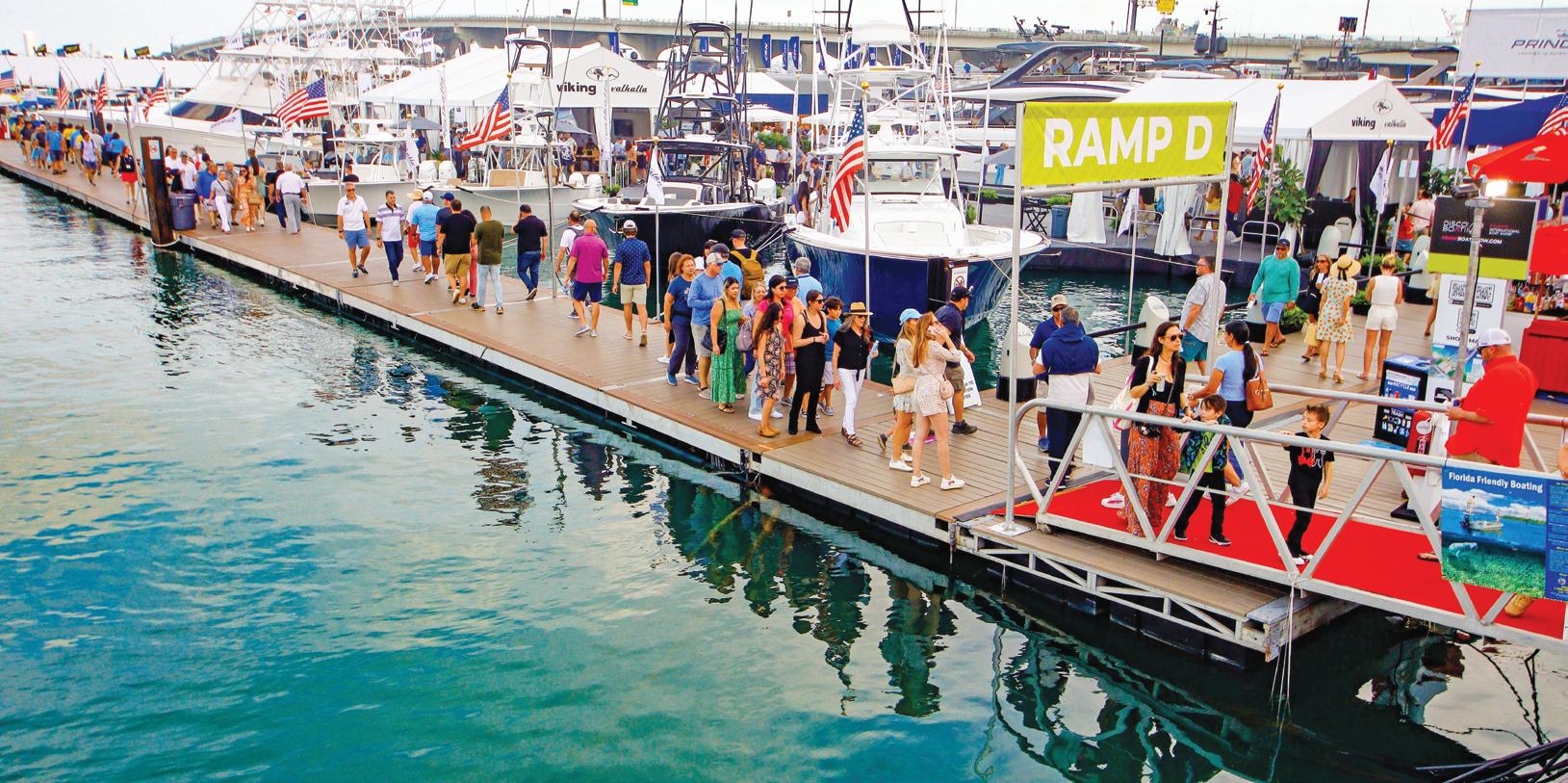

Governor Ron DeSantis joined officials from Miami-Dade County, the City of Miami, and the City of Miami Beach, along with representatives from the show’s owners, the National Marine Manufacturers Association (NMMA), show producers Informa Markets, and the International Yacht Brokers Association (IYBA), to officially open the event with a ribboncutting ceremony.
In his remarks, Governor DeSantis highlighted the significant economic impact of Florida’s recreational boating industry and its vital role in the state’s tourism sector.
The Miami Boat Show is an economic engine for the state of Florida and the U.S. recreational boating market, with nearly $1 billion in regional impact—notably about twice that of the previous weekend’s big football event in New Orleans.
Despite continued headwinds after years of record growth in recreational boat unit sales and a softening in attendance, exhibitors expressed optimism with reports of boat buyers shopping the show for the latest innovations, reinforcing the 2025 market assessment issued by the NMMA in January. Exhibitors reported a high quality of leads generated during the show while acknowledging the evolving economic conditions shaping attendees’ sentiment.
“This year’s MIBS was outstanding! We benefited from a buyer that is on strong financial footing with a positive outlook for the future. MarineMax and our manufacturing partners put forth aggressive pricing to capitalize on existing inventory. We are extremely pleased with both deals written at the show and potential deals that were started at the show. Congrats to the organizers on driving the right people to the show,” shared Chuck Cashman, Chief Revenue Officer of MarineMax.
“Miami was another strong show for our brands and teams,” said Dave Foulkes, Brunswick Corporation CEO. “Despite continued economic uncertainty, we’ve seen some encouraging signs from consumers and dealers at the early-season domestic and international boat shows enabled by our investments in innovative new products and our industry-leading global teams.”
“With Florida as the top boating state in the U.S. and more than $6.5 billion in annual sales of new products, despite the ongoing economic uncertainty being felt across the industry, tens of thousands of boaters attended the show from around the world to see and buy the latest marine innovations from the best brands in the industry— from AI-powered autonomous docking systems to augmented reality navigation to hydrogen propulsion technology—making the Discover Boating Miami International Boat Show the global destination for boating enthusiasts,” said Frank Hugelmeyer, President and CEO, NMMA.
As the show continues bringing the best of boating to South Florida each year, one of this year’s most exciting announcements is the much-anticipated return of the yacht showcase to Indian Creek in Miami Beach. Approved by the City of Miami Beach on February 3, this move enhances the experience
The 2025 Discover Boating® Miami International Boat Show (DBMIBS) wrapped up its 84th edition after a five-day exhibition across six locations in Miami and Miami Beach. The event, one of the largest boat shows in the world and a hub for the newest innovations and boats on the market, brought together consumers, industry leaders, and government officials to connect, explore, and shop the latest in recreational boating.

for exhibitors and attendees while preserving the show’s multi-jurisdictional presence across Miami and Miami Beach. The plan leverages City-owned waterfront along Collins Avenue north of 41st Street, incorporating strategic measures for traffic flow and sustainability. Meanwhile, the Miami Beach Convention Center & Pride Park, Museum Park Marina, Venetian Marina, and IGY Yacht Haven Grande will continue serving as key venues.
“With the 2025 show wrapping, our team is already looking towards 2026,” said Andrew Doole, President of U.S. Boat Shows, Informa Markets. “The return of the yacht showcase to Indian Creek in Miami Beach will enhance the experience for both exhibitors and attendees. We’ve received positive feedback from many exhibitors, who are excited about the opportunities this move brings. This move sets the stage for an exciting future for the Discover Boating® Miami International Boat Show, reinforcing the region’s role as a leading global boating destination.”
“The yacht showcase provides a global stage for business development, networking, and showcasing the best in yachting from the boats themselves to the emerging technologies,”
said Paul Flannery, COO, IYBA. “We look forward to returning to Miami Beach.”
“We look forward to next year’s new venue for the yacht component along the Indian Creek waterfront, which will create a more seamless experience with the Convention Center location of the show and bring new opportunities to immerse the boating and yachting community in the social and entertainment backdrop of Miami Beach,” echoed Hugelmeyer.
As part of its ongoing commitment to marine conservation and community engagement, the show named Cupid Splash as its official charitable partner. Sponsored by Informa, Cupid Splash hosted a fundraising event benefiting the Biscayne Bay Recovery Fund, managed by The Miami Foundation. DBMIBS guests had the opportunity to support the cause by making a donation during the ticket check-out process. On Sunday, February 16, Cupid Splash culminated in a pledge-and-plunge challenge at Collins Park Beach.
On Thursday, Feb. 13, NMMA hosted the 2025 Miami Innovation Awards during the annual Industry Breakfast, recognizing 12 companies for their contributions to marine technology and innovation. Presented with Boating Writers International (BWI), the awards celebrate manufacturers introducing forward-thinking solutions. A full list of winners is available on NMMA.org.
The 85th Annual Discover Boating® Miami International Boat Show (DBMIBS) returns February 11-15, 2026.











internationally and domestically in the destinations where they host each show.
In Sarasota, Informa’s U.S. Boat Show division partners with Mote Marine Laboratory and Aquarium in a fundraising e#ort and opportunity to put leading-edge ocean conservation science into action today. Donations to Mote Marine Laboratory and Aquarium can be made with ticket purchases for the Suncoast Boat Show.
Tickets for this year’s Suncoast Boat Show must be purchased in advance via the website https://www.suncoastboatshow.com/en/home.html Tickets are $20 and children ages 15 and under are free. Veterans and active-duty military show proof of military service for a free ticket. !e show opens on Friday, April 25 at 10:00 a.m. to 6:00 p.m., continuing Saturday, April 26 from 10:00 a.m. to 6:00 p.m. and Sunday, April 27, 2025 from 10:00 a.m. to 5:00 p.m. at Marina Jack, #2 Marina Plaza, Sarasota, Florida.

April 25-27, 2025 and presents an extraordinary selection of sport power boats and motor yachts in water and on land along Sarasota’s luxurious
e Suncoast Boat Show is hosted by the U.S. Boat Show division of Informa Markets, the exhibitions organizer that owns and operates the world’s leading international boat and yacht events. Integral to a corporate culture of sustainability, Informa U.S. Boat Shows has donated thousands of dollars to support multiple initiatives advocating for environmental preservation,

Established in 1955 by Dr. Eugenie Clark, Mote Marine Laboratory is a nonpro t organization working to protect and conserve marine resources. With over
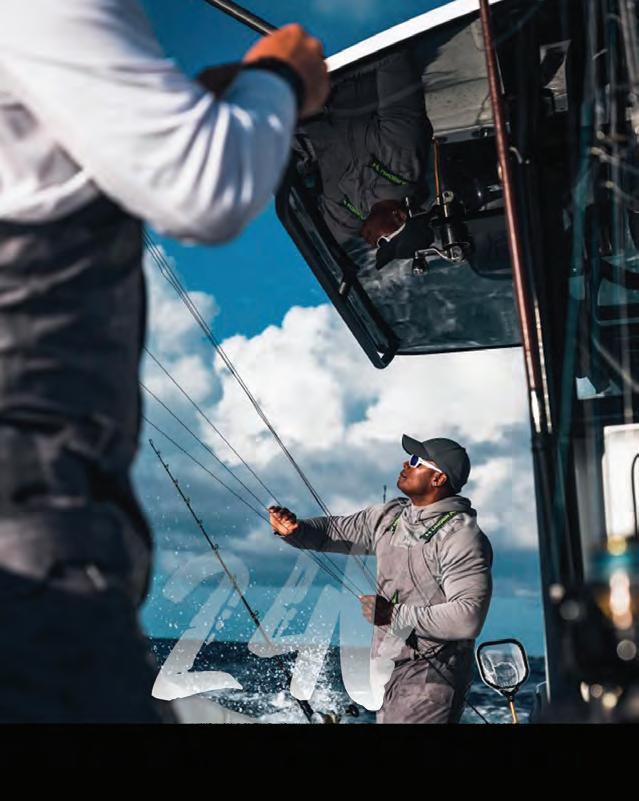
On Saturday and Sunday, well known Sportsman Channel host Captain gives each participant a free rod and reel. Captain Dingman is an expert angler other parents how important it is to spend quality time with their own kids. suncoastboatshow.com. Follow as details are updated on facebook.com/ SuncoastBoatShow; Twitter and Instagram: @suncoastboatshow.









APRIL 25-27


By atch Maguire

Fishing has long been a cherished pastime for millions around the world, o#ering a unique blend of relaxation, excitement, and connection to nature. However, with increasing pressure on aquatic ecosystems, ethical anglers are turning to catch and release shing as a means to enjoy the sport while safeguarding sh populations for future generations. !is practice, when done correctly, provides ecological, educational, and recreational bene ts that extend well beyond the individual angler.
One of the most signi cant advantages of catch and release shing is its role in conserving sh populations. Many popular sh species face threats from over shing, habitat loss, and climate change. By releasing sh back into their natural habitats, anglers help maintain healthy population levels, ensuring that future generations can continue to enjoy the sport.
To maximize the survival rate of released sh, it is essential to handle them properly. Techniques such as using barbless hooks, minimizing handling
time, and avoiding contact with the sh’s gills or slime coat are critical. Tools like rubberized landing nets and sh-friendly dehooking devices further reduce stress and injury, allowing the sh to recover and thrive.
Fish play integral roles in aquatic ecosystems, o$en serving as both predators and prey. Removing too many individuals from a population can disrupt these delicate balances, leading to cascading e#ects throughout the ecosystem. Catch and release shing helps mitigate this risk by allowing sh to return to their environment and continue ful lling their ecological roles. Healthy sh populations contribute to water quality, biodiversity, and the overall stability of aquatic habitats.
Catch and release shing also promotes a deeper sense of ethical responsibility and stewardship among anglers. It encourages a shi$ from viewing shing as purely extractive to appreciating it as an opportunity to engage with nature in a more sustainable way. !is perspective aligns with the principles of conservation-minded organizations, inspiring individuals to advocate for clean water, habitat restoration, and responsible shing practices.
Beyond the ecological bene ts, catch and release shing enriches the overall experience for anglers. Knowing that their actions contribute to conservation can provide a sense of ful llment and purpose. Additionally, the challenge of landing a sh, observing its beauty, and releasing it unharmed adds a layer of skill and respect to the sport. Many anglers report that the act of releasing a sh is as rewarding as catching it, if not more so.
Catch and release shing serves as a powerful teaching tool for younger generations. By involving children and new anglers in this practice, seasoned anglers can instill values of conservation and respect for nature. !ese lessons foster a lifelong appreciation for the environment and encourage responsible outdoor recreation.
In an era where human activities increasingly impact natural ecosystems, catch and release shing stands out as a practice that balances enjoyment with responsibility. By embracing this approach, anglers contribute to the preservation of sh populations, the stability of aquatic ecosystems, and the cultivation of ethical outdoor traditions. Whether shing for sport or relaxation, choosing to release your catch ensures that the thrill of the ght, the joy of connection, and the beauty of nature remain accessible for generations to come.



May 9th & 10th, 2025
Online Registration: MothersDayDolphinTournament.com
Captain’s Meeting
Liechty Marine
Friday May 9th - 6pm to 7pm
Lines In: Saturday, May 10 - 7:30am
Lines Out: Saturday, May 10 - 3:30pm
Weigh-In
Curly’s Co ee
Saturday, May 10th - 3:30pm to 6pm
Awards Banquet
Marathon Yacht Club
Saturday, May 10th - 7pm
Sunday Honor












By A. deGruchy

with lessons about life, responsibility, and the pure joy of shing, as well as expecting the unexpected. Fast forward to today, and I nd myself shing alongside my husband, a charter captain in the Florida Keys.
Fishing here isn’t just a pastime; it’s a way of life. From pulling in powerful Snook to chasing Sail sh on the edge of the reef, every trip o#ers new adventures. My husband and I share a love for shing, and I’ve learned so much about professionalism from watching him do his thing. Whether guiding seasoned anglers or teaching rst-timers, his patience, expertise, and enthusiasm shine. It’s a reminder that professionalism isn’t just about skill, it’s about how you treat people and create unforgettable experiences.
It’s been amazing to see more women embracing shing, from young girls joining family trips to seasoned anglers outpacing the boys on the boat. Even more inspiring is the rise of female captains and mates, rewriting the narrative and proving that grit, determination, and passion know no gender.
Fishing has always been about more than just the catch, it’s about family, adventure, and forging connections, both with the people you’re with and the water itself. Watching women claim their space on the water, competing and winning in major tournaments, and stepping into categories once dominated by men is a powerful reminder of how far we’ve come. Women are now sharing the joy of shing with their partners, landing incredible catches together, and showing that this sport is for everyone. !e waves we’re making are just getting started, and it’s inspiring to see skill and love for the ocean take center stage.
Fishing has long been a tradition passed down through generations, o$en painted as a male-dominated pursuit.
But like the tides, things are changing. Women are stepping aboard boats, rigging lines, and reeling in trophies, proving that the waters are open to everyone. As someone who grew up with a shing rod in hand, I’ve seen this transformation rsthand, and it’s inspiring.
My journey into shing began thanks to my dad. He was the one who introduced me to shing. !ose early days were lled

So here’s to the women who sh, lead, and inspire. May your lines be tight, your horizons wide, and your stories endless.
Whether you’re a seasoned angler or a rst-time sher, let’s create memories together. Book your trip now at www.beansport shing.com and experience the thrill for yourself!
Be sure to follow Astrid’s adventures on Instagram, @catching_astrid and @bean_sport shing.





























By

The recreational shing industry is on the brink of a technological revolution, with autonomous boating emerging as a transformative force. While self-driving cars have dominated headlines, the development of autonomous boats is quietly reshaping how anglers approach their favorite pastime. !ese advancements promise to enhance safety, e ciency, and accessibility, potentially changing the way people experience shing forever.
One of the most signi cant bene ts of autonomous boating in recreational shing is the ability to optimize navigation. Advanced GPS and AI-driven systems can analyze weather patterns, water conditions, and sh activity to chart the best possible routes. Instead of relying solely on experience or guesswork, anglers could have boats that take them to the most promising shing spots with precision. !is technology reduces the time spent searching for sh and maximizes the chances of a successful outing.








Bradenton - May 12
Clearwater - Jun 2
Tampa/Brandon - Jun 16
Crystal River - July 7 Palm Bay - July 7
Crystal River - May 10-12
Bradenton - May 24-26
Palm Bay - July 19 – 21
Safety is another critical aspect that autonomous boats could improve. Many shing accidents occur due to human error, whether it’s navigating unfamiliar waters, dealing with sudden weather changes, or simply losing focus. With AI-driven controls, boats could automatically adjust speed, avoid obstacles, and even return to shore if conditions become too dangerous. !is level of automation provides an added layer of security, especially for solo anglers who might face emergencies without immediate help.
Accessibility is another area where autonomous boats could make a profound impact. For many, operating a traditional shing boat requires skill, physical e#ort, and extensive knowledge. !ose with limited mobility or minimal boating experience o$en face challenges when trying to enjoy shing on the water. Autonomous technology could allow more people to participate by simplifying the boating experience. With user-friendly controls or even remote operation via a smartphone app, individuals of all backgrounds and abilities could enjoy shing without the steep learning curve associated with traditional boating.
!e integration of smart shing technology into autonomous boats could further enhance the angling experience. Innovations like underwater imaging, automated bait deployment, and real-time sh tracking are already making their way into modern shing gear. When combined with an autonomous vessel, these tools could provide an unprecedented level of e ciency. Imagine a boat that not only takes you to the ideal shing location but also adjusts its position based on sh movement, current ow, and water depth. Such advancements could make shing more productive and enjoyable than ever before.
Despite the promising future of autonomous boating in recreational shing, challenges remain. !e cost of developing and maintaining this technology is still high, potentially limiting accessibility for the average angler. Regulatory concerns also pose hurdles, as governments and maritime authorities must determine how autonomous boats t within existing laws. Additionally, traditionalists in the shing community may resist the shi$ toward automation, arguing that it takes away the skill and personal connection that make shing special.
As technology continues to evolve, autonomous boats will likely become more sophisticated, a#ordable, and widely accepted. Just as GPS revolutionized navigation and sh nders improved catch rates, AI-driven boats have the potential to rede ne the recreational shing experience. While the transition may take time, the possibilities are endless, and the future of autonomous boating in shing looks
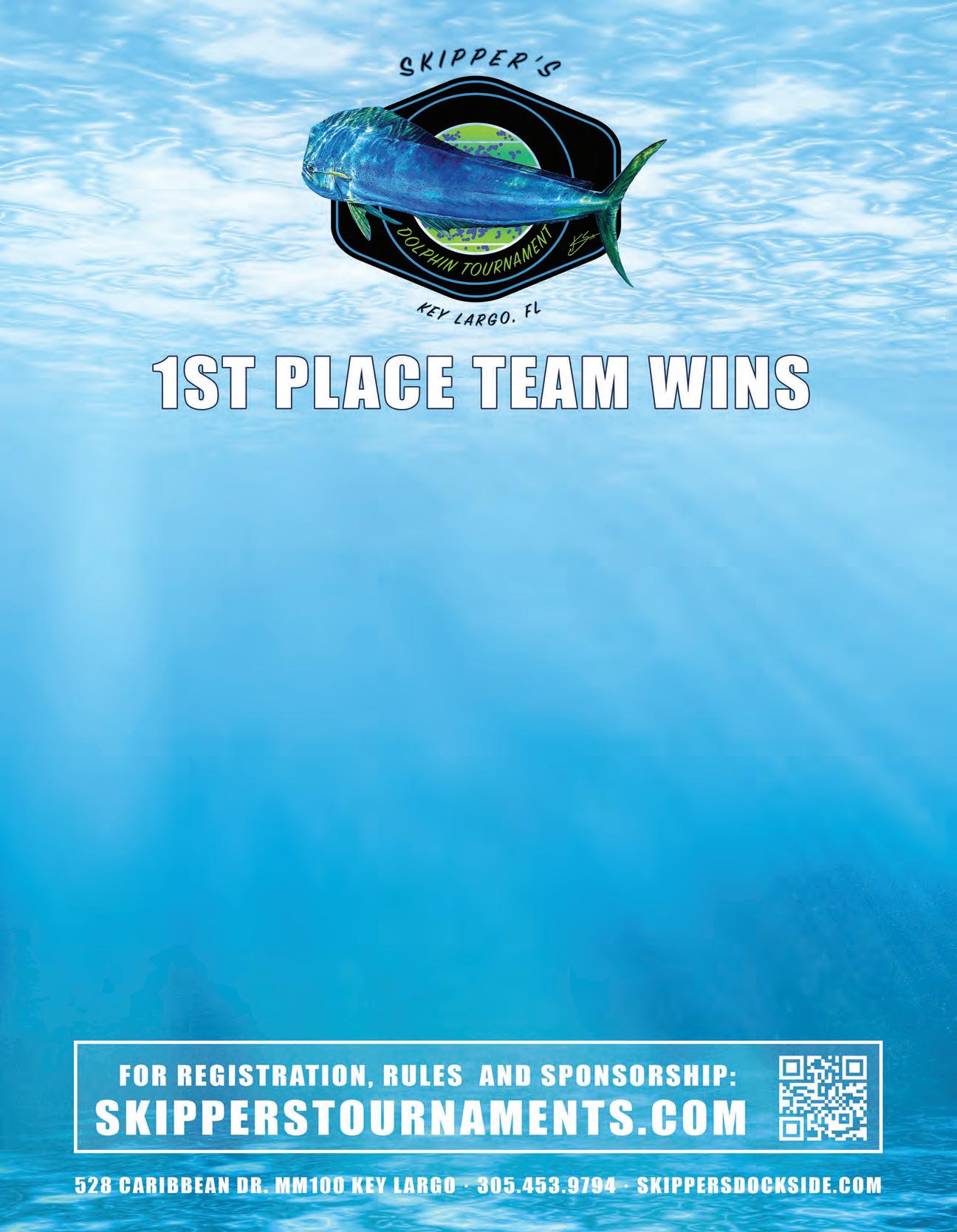






The National Pediatric Cancer Foundation (NPCF) created “Fishing Funds the Cure” to raise awareness and funds for crucial research. Each year, they unite corporate partners, passionate anglers, and dedicated supporters for Fishing Funds the Cure Tournaments through an activity that everyone loves. ese exciting inshore and freshwater shing tournaments are held in beautiful locations like St. Pete Beach and Sarasota, Florida, San Juan, Puerto Rico, and more. Each event, thoughtfully designed to engage supporters, features a kick-o celebration, angler swag bags, an awards dinner and a silent auction, all dedicated to making a meaningful impact.
NPCF organizes these events to blend the universal love for shing with an important cause. eir mission is to conduct research leading to less toxic and more therapeutic treatments for children with cancer, and are committed to making a di erence in a system that o$en neglects our children. Despite their bright futures, only 4% of government funding for cancer research supports pediatric initiatives, highlighting the urgent need for advocacy.
NPCF has made remarkable progress and is recognized as the nation’s leading solution, delivering rapid, innovative, and e%cient science
through a collaborative network of 40 hospitals. Operating independently of pharmaceutical and government funding, with eight institutions noted in the “Top 20” by US News, they have invested over $40 million in translational studies and clinical trials. NPCF currently have 30 studies and 11 active trials:
• A new drug compound – which could be the 11th drug utilized to treat children
• Blood bio-marker study – which could be a prevention indicator for relapse patients
• A rare disease trial addressing “rhabdomyosarcoma”
• Multiple combined immunotherapy trials to include a potential vaccine
• NPCF has also authorized the “ rst-ever” education toolkit – provided to pediatric cancer families
• ey are also developing treatment guidelines for relapse patients
If shing is your passion, NPCF invites you to channel that enthusiasm toward a worthy cause. Join them at one of their tournaments, organize your own fundraising event, or take on their “43 Challenge” to honor the 43 children diagnosed

with cancer every day. You can easily start by using NPCF’s online fundraising tool, challenging 43 friends to sh, and encouraging them to donate $43.
e National Pediatric Cancer Foundation is proud to be a top-rated charity, with 89% of every dollar donated directly supporting research. To learn more, visit NationalPCF.org.






The month of April is when the real change comes around. For a number of reasons, April can be a game changer. Just for starters, we have made it out of the month of March and the “Gales of March.” !e temperatures will rise, the daylight hours will be longer, and the urge to spawn will get stronger for a lot of species.
!e pelagics will be on the march up the coast headed north, and I have taken a much di erent approach to shing in general, but especially for the pelagics. Sure, we may troll for a short period in the morning to mark some bait and/or productive bottom holding sh like African pompano, big snapper and grouper, but trolling will quickly stop and dri$ing and/ or %ying the kite will begin as the sun rises in the sky. As the title of the article suggests, we have either stopped on the way out or will start to work with the Sabiki right away.
!is is the key: when you have the live bait, you get the bites. Don’t hesitate to bring bait from the dock like pin sh, menhaden, etc. to use as light-line kite bait or bottom bait. Sometimes it’s just easier to pull up beside the bait barge and exchange some green for sardines, cigar minnows, goggle eyes, etc., so you can just get on with getting to where





Tim Barefoot

you’re going and start shing right o the bat. When you nd a good mark of bait, and hopefully bottom structure, the stage is set. Put the kite %oats, tackle or freelines out and start sending the jigs to the mid or lower water

column, and even to the bottom. Of course, I like a natural looking squid jig you can cast to breaking sh that’s heavy enough to sh in the mid to lower water column or a few hundred feet deep when needed on the bottom. the
entire time you were harvesting sh on the jig pay attention to the free line or %oat baits and keep some chum going if possible. !is is a great way to bring the sh to you. !ey will de nitely come to the chum.
As always, I would pay attention to the amount of noise you make. Don’t let cooler lids slam down or hard objects hit the deck; this will send a soundwave hundreds of yards away from the boat telling the sh something isn’t right. If you’re dri$ing quietly with a chum slick out and beautiful live baits, you have a recipe for success!
!is is a great time of year to catch that African pompano of a lifetime in 150- to 250foot range as they are ready to break up into smaller schools for spawning. Again, I like a squid-type jig because it is the primary food source for the African pompano. It is the bulk of their diet according to the experts. And it’s not just African pompano; everything out there, without exception, eats a squid. !is is a great way to catch big snappers as well. Pull up to where the marks are, make a dri$ and repeat as o$en as needed. A trolling motor upfront can slow the dri$ nicely, keeping your boat forward in the wind with the kite bait or %oat, and baits behind the boat very manageable.
And be sure to keep an eye on the recorder to know where to keep the jig in front of sh.
For more info on the squid jig and dri ing, check out Tim Barefoot’s YouTube channel and website, barefootcatsandtackle.com.






It was a warm summer afternoon and my wife and I were mingling with the best of them. The occasion was a 1920s-themed party, and everyone was dressed to the nines. Parked on the manse’s circular driveway was a beautiful classic convertible. It was here that I got the idea for our new 1920s Retrograde Watch.
Never ones to miss an opportunity, we carefully steadied our glasses of bubbly and climbed into the car’s long front seat. Among the many opulent features on display was a series of dashboard dials that accentuated the car’s lavish aura. One of those dials inspired our 1920s Retrograde Watch, a genuinely unique timepiece that marries timeless style with modern technology.

With its remarkable retrograde hour and minute indicators, sunburst guilloche face and precision movement, this design is truly one of a kind. What does retrograde mean? Instead of displaying the hands rotating on an axis like most watches, the hands sweep in a semicircle, then return to their starting point and begin all over again.

Retrograde watches by the big brands can set you back thousands; one recent offering from a big French fashion house is selling for more than $150,000! But because we’ve designed the 1920s Retrograde Watch in-house, we can offer it to you for just $99!
This watch is so wildly popular with our customers that we’re actually concerned about running out; we only have 937 729 left for this ad!
Join more than 1 MILLION smart people who love stauer watches

Watch Specifications:
• Precision movement
• Stainless steel case, caseback and crown
• Retrograde hour and minute indicators
• Water-resistant to 5 ATM




• Brown genuine leather band
• Fits wrists up to 8"
1920s Retrograde Watch
$399 $99* + S&P Save $300


*Special price only for customers using the offer code.





“An elegant and exciting timepiece that every collector will love.”
— George Tomas, internationally renowned watch expert



“[A] unique and beautiful timepiece.”
— Carlos C., Los Banos, CA





By Don Norton

Most anglers think of Lake Okeechobee, Florida, and many other great shing lakes as a destination for largemouth bass. And they truly are. But for those in the know, “Lake O” boasts some of the greatest bluegill shing you’ll nd anywhere in the country.
!is is the time of the year—April and May—that bluegill anglers look forward to all year long. !is is when the feisty, hard- ghting pan sh begin their annual spawn. !eir popularity is unmatched with young and experienced anglers looking to test their light line and tackle.
While bluegill is a single species (Lepomis macrochirus), it is sometimes categorized into three subspecies: the northern bluegill, the coppernose
bluegill, and the southwestern bluegill.
To add to the confusion, redear sun sh and bluegills, both belonging to the sun sh family, are easily confused, but can be distinguished by the red or orange coloration around the redear’s operculum (gill %ap), while bluegills have a dark blue to black operculum. Redear sun sh typically grow larger than bluegills, but are o$en caught in the same area, as are coppernose bluegill.
Bluegills are so plentiful that many anglers come to Lake Okeechobee every year just for them and go home with coolers full of their tasty lets. !e daily limit is $y pan sh per angler, and that’s not a hard number to reach when the season is in full swing.
Bluegills can be caught year-round, but when they come into the shallows to spawn, they become a much easier target. Many anglers will test their skills with a %yrod and small popper, while others will use live bait, light line, and tackle—and even bamboo cane poles!
On average, bluegill typically range from six to eight inches in length, although some can grow up to 10 to 15 inches. Nine inches is considered a decent keeper in the “Big O.”

To rig for bluegill, use a small hook (size 8-10) with a light line, a small split shot a few inches above the hook, and a bobber set to suspend your bait near the bottom; commonly used live baits include small worms, waxworms, or crickets, and you can also try small jigs or tiny so$ plastic baits depending on the situation and water depth.
When it comes to the time of day that produces the best bluegill shing, many anglers recommend early evening. As the sun begins to set, waters tend to calm down and %ying insects quickly become a big part of the menu.
But during the spawn, bluegills can be caught all day long.

Finding the beds is relatively easy. Just look in shallow water, 5-foot deep or less for small circular divots in the sandy bottom. !ese “beds” will o$en be close together and will sometimes number in the hundreds.
!e world record bluegill—a sh weighing 4 pounds, 12 ounces— was caught in 1950 in Ketona Lake, Alabama with a cane pole and common worms.
Don Norton is Co-Publisher of Coastal Angler Magazine’s Okeechobee edition. Contact him at (863) 273-4998 or don@theanglermagazine.com.
















Praise for DiamondAura®
“So much sparkle and the play of light on DiamondAura® beats any diamond!” — D.D. from Columbus, OH
A classic tennis bracelet serves up over 10 carats of sparkle for a guaranteed win
It was the jewelry piece that made the world stop and take notice. In the middle of a long volley during the big American tennis tournament, the chic blonde athlete had to stop play because her delicate diamond bracelet had broken and she had to fnd it. Te tennis star recovered her beloved bracelet, but the world would never be the same.
From that moment on, the tennis bracelet has been on the lips and on the wrists of women in the know. Once called eternity bracelets, these bands of diamonds were known from then on as tennis bracelets, and remain the hot ticket item with jewelers.


with D Flawless diamonds from another company that costs $57,000!
Want to look like a million bucks without stressing over losing or damaging something that cost you a fortune? Te Love Wins Tennis Bracelet is a simple strand of glittering gems in precious sterling that epitomizes elegance.
FREE earrings with your purchase of the Love Wins Bracelet.

Te frst time we ofered this bracelet, we sold out literally in minutes. It was our fastest selling product of 2021. It took six months to get it back in stock — Get yours before we run out!
And there’s more... we will also include our Ultimate Diamond Alternative™ DiamondAura® stud earrings for FREE!
Jewelry Specifcations:

• 10 ¾ ctw of the Ultimate Diamond Alternative®, DiamondAura®
• Rhodium-fnished .925 sterling silver settings
• Bracelet: Fits wrists to 7 ½". Earrings: 1 ctw with post backs


We’ve captured this timeless classic with over 10 total carats of DiamondAura®, our signature diamond alternative stone. Tis sparkling marvel rivals even the fnest diamonds (D Flawless) with its transparent color and clarity, and both are so hard they can cut glass. Don’t believe me? Te book “Jewelry and Gems – Te Buying Guide,” praised the technique used in our diamond alternative DiamondAura®: “Te best diamond simulation to date, and even some jewelers have mistaken these stones for mined diamonds,” it raved. For comparison, we found a similarly designed 10 carat tennis bracelet
Love Wins Tennis Bracelet (10 ¾ ctw) $399 $39* + S&P
FREE stud earrings (1 ctw) with your purchase of the Love Wins Bracelet — a $99 value!
*Special price only for customers using the offer code.

Your Offer Code: LWB343-02
TYLER WOOLCOTT

ne of my all time favorite times of year to fish with one of the most fun ways to catch a bass. The spawn and post spawn feed is here for most of us in the south and it won’t be long for many others in the other parts of the country. There is a plethora of ways to catch these bass, but my all time favorite for getting bit and drawing in a big one is a hollow body popping frog.
A popping frog can be used as an incredible search bait, duplicating many different baitfish depending on where you throw it and what color you tie on. There are many different options out there, but I try to duplicate the baitfish forage in the particular lake I am fishing on. Sometimes I will stick to a frog that may imitate a bluegill, and sometimes I throw a color that would imitate a shad. Finding a frog that pops well, has good colors, and a big hook is a few things that need to check the boxes for me. The Gambler popping frog is good and so is the Spro.
When I throw a frog as a search bait, I like to work it faster than most. Cover as much water as possible until you put a pattern together on what exactly the fish are focusing on. That’s the magic of a frog; you can literally throw it around everything! Docks, lay downs, grass and down banks are just a few of the targets I would look for. Once you locate a group of fish or find that right area that they are using you can slow down and pick them off a little slower. I have noticed sometimes there isn’t a “too fast” while working a popping frog.
A couple things that I look for this time of year are areas with active fish spawning, fry guarding bass, and also fish roaming the banks feeding on bluegill. This is something that is very predictable and an awesome way to catch big ones when you get around it. Typically, if you know of a few areas that the fish had previously spawned, these patterns will be occurring in the same areas. I throw a bluegill pattern popping frog because the bluegill will typically be a fish that chase their fry and a fish that drives them crazy this time of year.
Another pattern that you might want to keep your eyes out for is a shad spawn. This usually occurs in the mornings and in the evenings and can be a way to catch a bunch of fish in a hurry. We typically look for birds feeding on banks while running down the lake; you find the birds, you find the bait! A white popping frog or a baitfish color is typically my choice in this situation as a lot of times these fish are so keyed in on the baitfish that you’ll want to match the hatch.

A popping frog can work all year long, but this time of year I think it excels the greatest. It’s an incredible search bait that really drives these fish crazy, and who doesn’t like catching fish on a topwater with heavy line and a heavy rod? Grab a popping frog and go catch some big bass! Frog Fishing Gear: Typically when throwing a popping frog you will be around some heavy cover and need to have some big hooks to get through the fish’s mouth. This calls for a heavy rod, some big line and a fast-geared reel. I like to throw a 13 Fishing 7’4H Myth rod paired with a Concept A 8.3 reel spooled up with Sufix 832 50 lb. braid. This setup will allow you to get the fish out of the heavy cover and into the boat.
Tyler Woolcott is a professional tournament angler and guide. Check out his website at www.tylerwoolcottfishing.com.




















You’re looking at it! Furuno’s award-winning Radar gives you clarity & target separation like no one else. Don’t take our word for it. See for yourself. Scan here, and we’ll show you! DRS4DNXTDRS6ANXT




